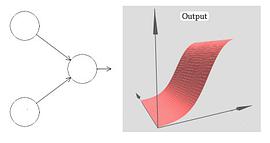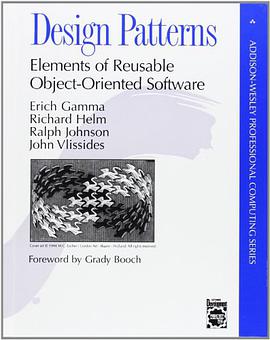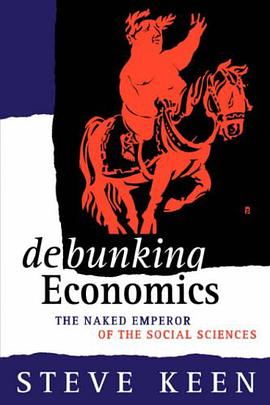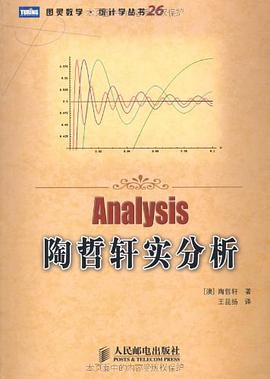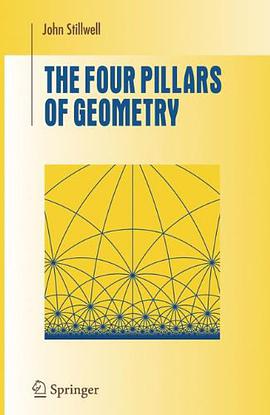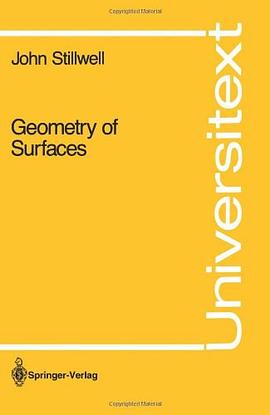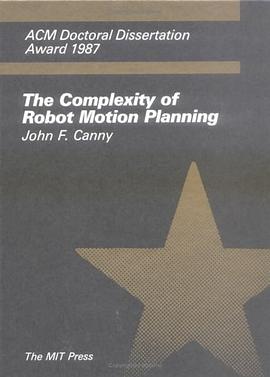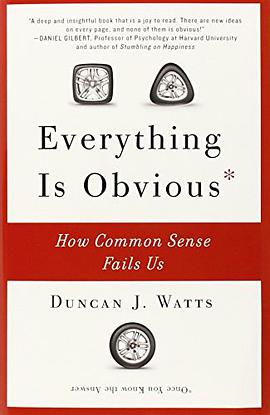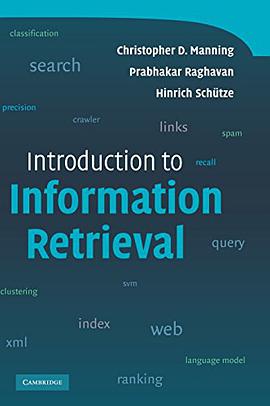澳大利亞
Blue Neighbourhood 豆瓣
8.9 (15 个评分)
Troye Sivan
类型:
流行
发布日期 2015年12月4日
出版发行:
Polydor Group
出生於南非約翰尼斯堡的特洛伊,從小便熱衷於音樂和戲劇,在12歲那年先是獨立錄製了一張名為【Dare to Dream】的EP,開啟了他的音樂生涯;同時,標致帥氣的外型也吸引到電影圈的青睞,受邀在電影《X戰警:金鋼狼》飾演年少金鋼狼;而在17歲時,再次獨立發行了一張EP 【June Haverly】。這兩張全由特洛伊一人獨立操刀完成,在網路上累積了超高人氣。今年20歲的他,以迷你專輯【Wild 音樂狂放】搶下英美專輯榜TOP5,榮獲時代雜誌「25大具有影響力青少年」、MTV歐洲音樂大獎「最有潛力新人」得主,他是音樂界中不可多得的電氣才子,也是樂壇最令人驚艷的新生代。
The Fault In Our Stars 豆瓣
8.0 (5 个评分)
Troye Sivan
类型:
流行
发布日期 2013年5月5日
出版发行:
Troye Sivan
Debunking Economics - Revised and Expanded Edition 豆瓣
作者:
Steve Keen
Zed Books
2011
- 10
Debunking Economics 2 exposes what many non-economists may have suspected and a minority of economists have long known: that economic theory is not only unpalatable, but also plain wrong. When the original Debunking was published back in 2001, the market economy seemed invincible, and conventional 'neoclassical' economic theory basked in the limelight. Steve Keen argued that economists deserved none of the credit for the economy's performance, and 'The false confidence it has engendered in the stability of the market economy has encouraged policy-makers to dismantle some of the institutions which initially evolved to try to keep its instability within limits'. That instability exploded with the devastating financial crisis of 2007, and now haunts the global economy with the prospect of another Depression. In this expanded and updated new edition, Keen builds on his scathing critique of conventional economic theory whilst explaining what mainstream economists cannot: why the crisis occurred, why it is proving to be intractable, and what needs to be done to end it. Essential for anyone who has ever doubted the advice or reasoning of economists, Debunking Economics 2 provides a signpost to a better future.
Neural Networks and Deep Learning 豆瓣
Michael Nielsen
作者:
Michael Nielsen
2016
- 1
http://neuralnetworksanddeeplearning.com/
Design Patterns 豆瓣 Goodreads
作者:
Erich Gamma
/
Richard Helm
…
Addison Wesley
1994
- 10
* Capturing a wealth of experience about the design of object-oriented software, four top-notch designers present a catalog of simple and succinct solutions to commonly occurring design problems. Previously undocumented, these 23 patterns allow designers to create more flexible, elegant, and ultimately reusable designs without having to rediscover the design solutions themselves. * The authors begin by describing what patterns are and how they can help you design object-oriented software. They then go on to systematically name, explain, evaluate, and catalog recurring designs in object-oriented systems. With Design Patterns as your guide, you will learn how these important patterns fit into the software development process, and how you can leverage them to solve your own design problems most efficiently.
鲁迅:中国“温和”的尼采 豆瓣
作者:
【澳】张钊贻
北京大学出版社
2011
- 10
本书共分五章:一、尼采到东方的旅程;二 、奴隶价值的重估;三、尼采的反政治性和精神激进主义;四、尼采的永恒的“民族性 ”改革;五、鲁迅文学创作中的尼采影响。在鲁迅研究的历史上,该书不仅是最新的成 果,而且在全面和深入方面处于执牛耳的地位。 在课题的拓展和研究进展上,该书至少有两个方面作出了 新贡献:第一是在鲁迅对尼采美学的中心主题的吸收方面;第二是在鲁迅与尼采哲学的 政治因素方面。本书在尼采美学思想对中国的影响研究“应该说是一种全面的重新估价”。
Debunking Economics 豆瓣
作者:
Steve Keen
Zed Books
2002
- 3
The Art of Prolog, Second Edition 豆瓣
作者:
Ehud Sterling Leon; Shapiro
The MIT Press
1994
This new edition of The Art of Prolog contains a number of important changes. Most background sections at the end of each chapter have been updated to take account of important recent research results, the references have been greatly expanded, and more advanced exercises have been added which have been used successfully in teaching the course.Part II, The Prolog Language, has been modified to be compatible with the new Prolog standard, and the chapter on program development has been significantly altered: the predicates defined have been moved to more appropriate chapters, the section on efficiency has been moved to the considerably expanded chapter on cuts and negation, and a new section has been added on stepwise enhancement -- a systematic way of constructing Prolog programs developed by Leon Sterling.All but one of the chapters in Part III, Advanced Prolog Programming Techniques, have been substantially changed, with some major rearrangements. A new chapter on interpreters describes a rule language and interpreter for expert systems, which better illustrates how Prolog should be used to construct expert systems. The chapter on program transformation is completely new and the chapter on logic grammars adds new material for recognizing simple languages, showing how grammars apply to more computer science examples.
The Fourier Transform & Its Applications 豆瓣
作者:
Ronald Bracewell
McGraw-Hill Science/Engineering/Math
1999
- 6
The Four Pillars of Geometry 豆瓣
作者:
John Stillwell
Springer
2010
For two millennia the right way to teach geometry was the Euclidean approach, and in many respects, this is still the case. But in the 1950s the cry "Down with triangles!" was heard in France and new geometry books appeared, packed with linear algebra but with no diagrams. Was this the new right approach? Or was the right approach still something else, perhaps transformation groups?
The Four Pillars of Geometry approaches geometry in four different ways, spending two chapters on each. This makes the subject accessible to readers of all mathematical tastes, from the visual to the algebraic. Not only does each approach offer a different view; the combination of viewpoints yields insights not available in most books at this level. For example, it is shown how algebra emerges from projective geometry, and how the hyperbolic plane emerges from the real projective line.
The author begins with Euclid-style construction and axiomatics, then proceeds to linear algebra when it becomes convenient to replace tortuous arguments with simple calculations. Next, he uses projective geometry to explain why objects look the way they do, as well as to explain why geometry is entangled with algebra. And lastly, the author introduces transformation groups---not only to clarify the differences between geometries, but also to exhibit geometries that are unexpectedly the same.
All readers are sure to find something new in this attractive text, which is abundantly supplemented with figures and exercises. This book will be useful for an undergraduate geometry course, a capstone course, or a course aimed at future high school teachers.
The Four Pillars of Geometry approaches geometry in four different ways, spending two chapters on each. This makes the subject accessible to readers of all mathematical tastes, from the visual to the algebraic. Not only does each approach offer a different view; the combination of viewpoints yields insights not available in most books at this level. For example, it is shown how algebra emerges from projective geometry, and how the hyperbolic plane emerges from the real projective line.
The author begins with Euclid-style construction and axiomatics, then proceeds to linear algebra when it becomes convenient to replace tortuous arguments with simple calculations. Next, he uses projective geometry to explain why objects look the way they do, as well as to explain why geometry is entangled with algebra. And lastly, the author introduces transformation groups---not only to clarify the differences between geometries, but also to exhibit geometries that are unexpectedly the same.
All readers are sure to find something new in this attractive text, which is abundantly supplemented with figures and exercises. This book will be useful for an undergraduate geometry course, a capstone course, or a course aimed at future high school teachers.
Geometry of Surfaces 豆瓣
作者:
John Stillwell
Springer
1992
- 6
The geometry of surfaces is an ideal starting point for learning geometry, for, among other reasons, the theory of surfaces of constant curvature has maximal connectivity with the rest of mathematics. This text provides the student with the knowledge of a geometry of greater scope than the classical geometry taught today, which is no longer an adequate basis for mathematics or physics, both of which are becoming increasingly geometric. It includes exercises and informal discussions.
The Complexity of Robot Motion Planning 豆瓣
作者:
Canny, John F.
1988
- 6
The Complexity of Robot Motion Planning makes original contributions both to robotics and to the analysis of algorithms. In this groundbreaking monograph John Canny resolves long-standing problems concerning the complexity of motion planning and, for the central problem of finding a collision free path for a jointed robot in the presence of obstacles, obtains exponential speedups over existing algorithms by applying high-powered new mathematical techniques.Canny's new algorithm for this "generalized movers' problem," the most-studied and basic robot motion planning problem, has a single exponential running time, and is polynomial for any given robot. The algorithm has an optimal running time exponent and is based on the notion of roadmaps - one-dimensional subsets of the robot's configuration space. In deriving the single exponential bound, Canny introduces and reveals the power of two tools that have not been previously used in geometric algorithms: the generalized (multivariable) resultant for a system of polynomials and Whitney's notion of stratified sets. He has also developed a novel representation of object orientation based on unnormalized quaternions which reduces the complexity of the algorithms and enhances their practical applicability.After dealing with the movers' problem, the book next attacks and derives several lower bounds on extensions of the problem: finding the shortest path among polyhedral obstacles, planning with velocity limits, and compliant motion planning with uncertainty. It introduces a clever technique, "path encoding," that allows a proof of NP-hardness for the first two problems and then shows that the general form of compliant motion planning, a problem that is the focus of a great deal of recent work in robotics, is non-deterministic exponential time hard. Canny proves this result using a highly original construction.John Canny received his doctorate from MIT And is an assistant professor in the Computer Science Division at the University of California, Berkeley. The Complexity of Robot Motion Planning is the winner of the 1987 ACM Doctoral Dissertation Award.
Greater France 豆瓣
作者:
Robert Aldrich
Palgrave Macmillan
1996
- 9
The Fiscal and Diplomatic, Freedom of the British Oversea Dominions 豆瓣
作者:
Edward Porritt
Forgotten Books
2015
- 9
Everything Is Obvious 豆瓣
作者:
Duncan J. Watts
Crown Business
2012
- 6
Why is the Mona Lisa the most famous painting in the world? Why did Facebook succeed when other social networking sites failed? Did the surge in Iraq really lead to less violence? How much can CEO’s impact the performance of their companies? And does higher pay incentivize people to work hard?
If you think the answers to these questions are a matter of common sense, think again. As sociologist and network science pioneer Duncan Watts explains in this provocative book, the explanations that we give for the outcomes that we observe in life—explanation that seem obvious once we know the answer—are less useful than they seem.
Drawing on the latest scientific research, along with a wealth of historical and contemporary examples, Watts shows how common sense reasoning and history conspire to mislead us into believing that we understand more about the world of human behavior than we do; and in turn, why attempts to predict, manage, or manipulate social and economic systems so often go awry.
It seems obvious, for example, that people respond to incentives; yet policy makers and managers alike frequently fail to anticipate how people will respond to the incentives they create. Social trends often seem to have been driven by certain influential people; yet marketers have been unable to identify these “influencers” in advance. And although successful products or companies always seem in retrospect to have succeeded because of their unique qualities, predicting the qualities of the next hit product or hot company is notoriously difficult even for experienced professionals.
Only by understanding how and when common sense fails, Watts argues, can we improve how we plan for the future, as well as understand the present—an argument that has important implications in politics, business, and marketing, as well as in science and everyday life.
If you think the answers to these questions are a matter of common sense, think again. As sociologist and network science pioneer Duncan Watts explains in this provocative book, the explanations that we give for the outcomes that we observe in life—explanation that seem obvious once we know the answer—are less useful than they seem.
Drawing on the latest scientific research, along with a wealth of historical and contemporary examples, Watts shows how common sense reasoning and history conspire to mislead us into believing that we understand more about the world of human behavior than we do; and in turn, why attempts to predict, manage, or manipulate social and economic systems so often go awry.
It seems obvious, for example, that people respond to incentives; yet policy makers and managers alike frequently fail to anticipate how people will respond to the incentives they create. Social trends often seem to have been driven by certain influential people; yet marketers have been unable to identify these “influencers” in advance. And although successful products or companies always seem in retrospect to have succeeded because of their unique qualities, predicting the qualities of the next hit product or hot company is notoriously difficult even for experienced professionals.
Only by understanding how and when common sense fails, Watts argues, can we improve how we plan for the future, as well as understand the present—an argument that has important implications in politics, business, and marketing, as well as in science and everyday life.
Introduction to Information Retrieval 豆瓣
作者:
Christopher D. Manning
/
Prabhakar Raghavan
…
Cambridge University Press
2008
- 7
Class-tested and coherent, this groundbreaking new textbook teaches classic web information retrieval, including web search and the related areas of text classification and text clustering from basic concepts. Written from a computer science perspective by three leading experts in the field, it gives an up-to-date treatment of all aspects of the design and implementation of systems for gathering, indexing, and searching documents; methods for evaluating systems; and an introduction to the use of machine learning methods on text collections. All the important ideas are explained using examples and figures, making it perfect for introductory courses in information retrieval for advanced undergraduates and graduate students in computer science. Based on feedback from extensive classroom experience, the book has been carefully structured in order to make teaching more natural and effective. Although originally designed as the primary text for a graduate or advanced undergraduate course in information retrieval, the book will also create a buzz for researchers and professionals alike.
Contents
1. Information retrieval using the Boolean model; 2. The dictionary and postings lists; 3. Tolerant retrieval; 4. Index construction; 5. Index compression; 6. Scoring and term weighting; 7. Vector space retrieval; 8. Evaluation in information retrieval; 9. Relevance feedback and query expansion; 10. XML retrieval; 11. Probabilistic information retrieval; 12. Language models for information retrieval; 13. Text classification and Naive Bayes; 14. Vector space classification; 15. Support vector machines and kernel functions; 16. Flat clustering; 17. Hierarchical clustering; 18. Dimensionality reduction and latent semantic indexing; 19. Web search basics; 20. Web crawling and indexes; 21. Link analysis.
Reviews
“This is the first book that gives you a complete picture of the complications that arise in building a modern web-scale search engine. You'll learn about ranking SVMs, XML, DNS, and LSI. You'll discover the seedy underworld of spam, cloaking, and doorway pages. You'll see how MapReduce and other approaches to parallelism allow us to go beyond megabytes and to efficiently manage petabytes." -Peter Norvig, Director of Research, Google Inc.
"Introduction to Information Retrieval is a comprehensive, up-to-date, and well-written introduction to an increasingly important and rapidly growing area of computer science. Finally, there is a high-quality textbook for an area that was desperately in need of one." -Raymond J. Mooney, Professor of Computer Sciences, University of Texas at Austin
“Through compelling exposition and choice of topics, the authors vividly convey both the fundamental ideas and the rapidly expanding reach of information retrieval as a field.” -Jon Kleinberg, Professor of Computer Science, Cornell University
Contents
1. Information retrieval using the Boolean model; 2. The dictionary and postings lists; 3. Tolerant retrieval; 4. Index construction; 5. Index compression; 6. Scoring and term weighting; 7. Vector space retrieval; 8. Evaluation in information retrieval; 9. Relevance feedback and query expansion; 10. XML retrieval; 11. Probabilistic information retrieval; 12. Language models for information retrieval; 13. Text classification and Naive Bayes; 14. Vector space classification; 15. Support vector machines and kernel functions; 16. Flat clustering; 17. Hierarchical clustering; 18. Dimensionality reduction and latent semantic indexing; 19. Web search basics; 20. Web crawling and indexes; 21. Link analysis.
Reviews
“This is the first book that gives you a complete picture of the complications that arise in building a modern web-scale search engine. You'll learn about ranking SVMs, XML, DNS, and LSI. You'll discover the seedy underworld of spam, cloaking, and doorway pages. You'll see how MapReduce and other approaches to parallelism allow us to go beyond megabytes and to efficiently manage petabytes." -Peter Norvig, Director of Research, Google Inc.
"Introduction to Information Retrieval is a comprehensive, up-to-date, and well-written introduction to an increasingly important and rapidly growing area of computer science. Finally, there is a high-quality textbook for an area that was desperately in need of one." -Raymond J. Mooney, Professor of Computer Sciences, University of Texas at Austin
“Through compelling exposition and choice of topics, the authors vividly convey both the fundamental ideas and the rapidly expanding reach of information retrieval as a field.” -Jon Kleinberg, Professor of Computer Science, Cornell University




